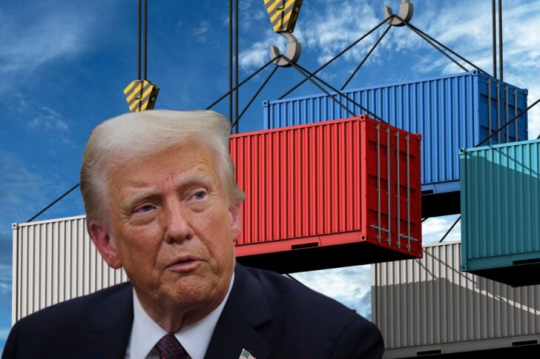KPL
The United States has reduced its reciprocal tariff on Lao imports from 48 percent to 40 percent, offering partial relief under President Donald Trump’s latest tariff policy. However, pressure on Laos and other US trade partners remains high ahead of the 1 August implementation deadline.

(KPL) The United States has reduced its reciprocal tariff on Lao imports from 48 percent to 40 percent, offering partial relief under President Donald Trump’s latest tariff policy. However, pressure on Laos and other US trade partners remains high ahead of the 1 August implementation deadline.
On 7 July, President Trump announced new tariff letters sent to 14 countries, including Laos, Thailand, Cambodia, Malaysia, and South Africa. The letters outline revised reciprocal tariffs as part of the administration’s ongoing effort to address what it deems unfair trade practices.
For Laos, the updated rate lowers the tariff from the 48 percent set under Trump’s “Liberation Day” policy in April, which had also introduced a 10 percent universal tariff, bringing total duties on Lao goods to 58 percent. The White House had calculated the overall trade barrier—including non-monetary restrictions—at up to 95 percent.
Under the latest revision, the reciprocal tariff on Lao imports will be capped at 40 percent. President Trump warned, however, that rates could rise again if countries impose retaliatory tariffs or fail to reduce barriers to US goods. He also encouraged manufacturers to relocate operations to the US to avoid future penalties.
Despite the reduction, the new tariff remains a major hurdle for Lao exporters. The US has become a growing market for Lao products such as wood furniture, footwear, textiles, electronics, and specialty coffee. A 40 percent tariff may prompt American buyers to seek cheaper alternatives, threatening the gains Lao businesses have made in international markets.
Other Southeast Asian countries also saw adjustments. Cambodia’s tariff was lowered from 49 to 36 percent, Malaysia’s to 24 percent, and Thailand’s was set at 30 percent. South Africa, a key US platinum supplier, now faces a similar 30 percent rate.
Markets responded sharply. Shares of Japanese and Korean auto companies—also named in the tariff letters—plunged on US exchanges, reflecting investor concerns over a widening trade rift. Thailand and Malaysia, both major exporters of semiconductors and electronics, were among the hardest hit.
Notably absent from this round of tariff actions was the European Union. EU officials indicated they were given more time to negotiate, suggesting that some trade partners may still avoid immediate escalation.
For Laos, however, the trade outlook remains uncertain. While the tariff cut offers some relief, the 40 percent rate still ranks among the highest imposed under the Trump administration’s current trade measures.
KPL